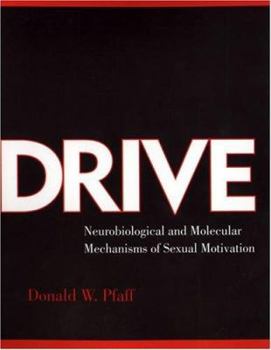Drive: Neurobiological and Molecular Mechanisms of Sexual Motivation
Select Format
Select Condition 
Book Overview
What arouses an animal or human from an inactive, nonresponsive state to a condition of activity and responsiveness? What are the biological mechanisms for this change? In this book Donald W. Pfaff focuses on a reproductive behavior typical of many female animals. Sensory stimuli from the male trigger responses in a well-defined circuit of nerve cells. At the top of the circuit, certain nerve cells receive and retain sex hormones such as estrogens...
Format:Hardcover
Language:English
ISBN:0262161842
ISBN13:9780262161848
Release Date:September 1999
Publisher:Bradford Book
Length:316 Pages
Weight:1.70 lbs.
Dimensions:1.0" x 7.3" x 9.3"
Age Range:18 years and up
Grade Range:Postsecondary and higher
Customer Reviews
2 ratings
Everything you ever wanted to know about rat sex, and more!
Published by Thriftbooks.com User , 22 years ago
This book is mainly about Pfaff's research into the neurobiological basis of sexual response, principally in the female rat, using the lordosis response as a model system. It is clearly written and well illustrated. The integration of hormonal and genetic influences in the context of a specific neural network is illuminating. Applications to understanding human sexuality are discussed but are limited in scope. Should be accessible to anyone with a couple of college courses in biology and physiological psychology.
A lucidly written account of a fascinating subject.
Published by Thriftbooks.com User , 25 years ago
"Smell-driven behaviors, dependent on sex hormones,partake of a Dionysian form of neurobiology," writes RockefellerUniversity scientist Donald W. Pfaff. "It just so happens that this ... type of neural function is necessary for reproduction." In his recently published book, "Drive - Neurobiological and Molecular Mechanisms of Sexual Motivation," Dr. Pfaff describes the interactions of hormones, hormone receptors, transcription factors, and genes, as well as the neuroanatomical circuits in which they operate, in producing the sexual differentiation and behavioral patterns necessary for procreation in mammals from rodent to homo sapiens. "Drive," declares Dr. Pfaff, "is a name for neural states that energize and direct behavior." It has two components, general (arousal) and particular (e.g., hunger, thirst, warmth, sex). The central nervous system is directly hormone-responsive, and a "neuroanatomical sex steroid receptor system" is highly conserved through evolution. The neural circuit for producing primary female reproductive behavior, and its dependence on estrogen and progesterone (as originally reported from Dr. Pfaff's laboratory) represents "the first example of the induction of a specific transcription factor key for the performance of a specific behavior." Hormonal interactions can be either competitive or synergistic. Vasopression, dependent on testosterone, "facilitates offensive aggression toward an intruder." By contrast, oxytocin, interacting with estrogen, "... is the neurohormone of affiliation and love." (Estrogen, moreover, favorably affects memory and is currently being studied for possible efficacy in Alzheimer's disease.) The book is profusely illustrated with tables, photomicrographs, and neuroanatomical diagrams. It is also clearly written and deserves to attract a large number of both professional and lay readers.






